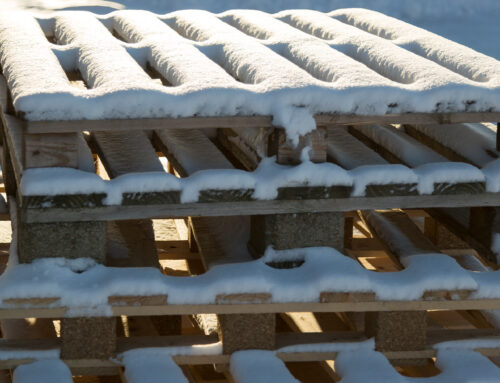Throughout 2020 and 2021, it always felt like we were either on the verge or in the middle, of a lumber shortage. While those two years were volatile, to say the least, many professionals who rely on the lumber industry are left wondering if we’re headed into another lumber shortage in 2022.
Many who watch the lumber market are quick to claim that news from a few days ago quickly becomes irrelevant. Although this may be true to an extent, looking at the events that have occurred over the last two years gives us a unique perspective when evaluating and predicting the lumber trends of today. Today we’ll be taking a look at what lumber’s done over the last two years and how, if at all, those trends affect today’s market. With this information, we’ll be able to answer the question, “Is there a lumber shortage?”
The Year That Changed Everything
The year the pandemic started was a rough year for everyone and everything, the lumber market was no different. The lumber shortage of 2020 was unexpected, unpredictable, and outright confusing at the time! Now, two years later, we can accurately evaluate just what happened in the lumber market.
Let’s revisit the scene in April of 2020. Millions of Americans were at home, nervous about the future, watching “Tiger King”, and scrambling for toilet paper. Amidst this odd circumstance, many people decided to seize the extra time they had to improve their homes. After all, there was no better time to do it, right? Although this was practical and convenient, the millions of DIYers across the nation all needed wood at the same time. With this unprecedented need, lumber prices were driven to highs that had never been seen before! Combined with this, mills all across North America were shut down temporarily due to COVID. Small supply and large demand created a massive lumber shortage.
Although this was primarily number 1 and 2 lumber, the lumber shortage had far-reaching effects, drastically increasing the price of industrial lumber as well. For the next couple of months after April, lumber was still historically high but gradually decreased as we entered 2021.
COVID Chapter Two – 2021
What an interesting year to say the least! Heading into 2021 many people predicted that the lumber market would slowly rebound. It did… until it didn’t. This year was marked by new variants, international disputes, and natural disasters – But somehow it still felt better than 2020, right?
For the first couple of months of 2021, the lumber market looked like it was beginning to stand back up on its feet again. After all, it couldn’t stay at those prices forever! Unfortunately, our Northern neighbors saw some extreme difficulties as we headed into the Summer.
If you’re unaware, a huge percentage of lumber in the United States is imported from Canada. With that being said, anything that happens to our trade partner can be felt throughout the nation, even in the Southeast United States.
So, what were these difficulties that the Canadians faced and how did they add to the lumber shortage in the United States?
As we touched on before, 2021 was filled with natural disasters. If you can recall, the Western United States was hit particularly hard with wildfires last Summer, this problem didn’t stop at the Northern border. The province of British Columbia, just north of Washington State, is one of the largest producers of Softwood in North America, exporting its goods all across the United States… This Canadian province was devastated by those same wildfires over the Summer of 2021. Because of these fires, fiber availability drastically dropped over the Summer. This helped lead to a continent-wide lumber shortage.
Once these fires ceased, Canadian lumber producers’ problems were far from over. Underbrush from these massive forests was incinerated. As rains put out the fires around August, mudslides began to happen due to the lack of vegetation under the trees. Around these remote forests, there isn’t very much infrastructure. The closing of one road or rail due to a mudslide can cause backups that can last for months. This was the case for all lumber coming from British Columbia for months on end.
These natural disasters were a major contributor to the lumber shortage that continued throughout 2021. Because of the decreased imports of Canadian lumber, lumber prices in the United States continued to rise throughout the nation.
So, What’s Happening Today? Is There a Lumber Shortage in 2022?
Unforeseen events have caused yet another Canadian supply chain disruption for lumber – the Canadian Trucker Protest. In February of 2022, what began as the “Freedom Convoy,” a trucker protest against COVID-19 policies staged at a key US-Canada border crossing near Ottawa, Ontario, has now morphed into several widespread trucker protests across the “Great White North.” No one knows how long the protests will endure, but many lumber industry experts expect the challenges to continue in Canada, and possibly the United States.
As of right now, the lumber shortage continues to drag on. Whether by man-made events, such as the DIY lumber grab and now the Canadian Trucker Protest, or natural disasters, such as wildfires or COVID-19, lumber continues to feel the effects of several different supply chain disruptions. We can only hope that as 2022 carries on, the lumber shortage will eventually come to an end.







